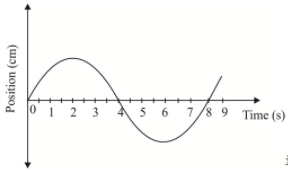A ball falls towards the earth. Which of the following is correct?
if the system contains ball, the momentum is conserved
if the system contains earth, the momentum is conserved
if the system contains the ball and the earth, the momentum is conserved
if the system contains the ball and the earth and the sun, the momentum is conserved
The correct Answer is:C
To solve the question regarding the falling ball and the conservation of momentum, we will analyze each option provided in the question step by step.
1. Understanding the System:
- We need to identify what constitutes the system in question. The ball is falling towards the Earth due to gravitational attraction.
2. Analyzing the Options:
- Option 1: "If the system contains the ball, the momentum is conserved."
- This option is incorrect because the ball is not an isolated system. It is influenced by the gravitational force of the Earth. Therefore, momentum is not conserved when considering only the ball.
- Option 2: "If the system contains the Earth, the momentum is conserved."
- This option is also incorrect. Although the Earth is a massive object, considering only the Earth does not account for the interaction between the Earth and the ball. Hence, momentum is not conserved in this case either.
- Option 3: "If the system contains the ball and the Earth, the momentum is conserved."
- This option is correct. When we consider both the ball and the Earth as a system, they exert forces on each other (the ball is pulled towards the Earth due to gravity, and the Earth is pulled towards the ball). Since there are no external forces acting on this system, the total momentum of the system (ball + Earth) is conserved.
- Option 4: "If the system contains the ball, the Earth, and the Sun, the momentum is conserved."
- This option is incorrect. While the Sun does exert a gravitational force on both the Earth and the ball, its effect is negligible in this scenario. The primary interaction affecting the ball's motion is the gravitational pull from the Earth. Therefore, including the Sun does not contribute to the conservation of momentum in this specific case.
3. Conclusion:
- The correct answer is Option 3: "If the system contains the ball and the Earth, the momentum is conserved."
- We need to identify what constitutes the system in question. The ball is falling towards the Earth due to gravitational attraction.
- Option 1: "If the system contains the ball, the momentum is conserved."
- This option is incorrect because the ball is not an isolated system. It is influenced by the gravitational force of the Earth. Therefore, momentum is not conserved when considering only the ball.
- This option is also incorrect. Although the Earth is a massive object, considering only the Earth does not account for the interaction between the Earth and the ball. Hence, momentum is not conserved in this case either.
- This option is correct. When we consider both the ball and the Earth as a system, they exert forces on each other (the ball is pulled towards the Earth due to gravity, and the Earth is pulled towards the ball). Since there are no external forces acting on this system, the total momentum of the system (ball + Earth) is conserved.
- This option is incorrect. While the Sun does exert a gravitational force on both the Earth and the ball, its effect is negligible in this scenario. The primary interaction affecting the ball's motion is the gravitational pull from the Earth. Therefore, including the Sun does not contribute to the conservation of momentum in this specific case.
- The correct answer is Option 3: "If the system contains the ball and the Earth, the momentum is conserved."
Similar Questions
A ball A moving with momentum 2ˆi+4ˆj collides with identical ball B moving with momentum 6ˆj . After collision momentum of ball B is 10ˆj . Which of the following statement is correct?
View SolutionA metalic ball strikes a wall and drops dead whereas tennis ball having the same mass and velocity bounces back. Which of the following is correct ?
View SolutionA satellite is revolving around earth in a circular orbit at a height R2 from the surface of earth. Which of the following are correct statements about it (M = mass of earth, R = radius of earth, m = mass of satellite) ?
View SolutionIf two balls of given masses and charges are released, which of the following is the correct arrangement in equilibrium?
View SolutionConsider the graph shown for the position of a ball attached to a spring as it oscillates in simple harmonic motion. Which of the following is correct?
The speed of ball is greatest at 2s
(ii)The speed of ball is greatestat 4s
(iii)The acceleration of ball is greatest at 2s
(iv)The acceleration of ball is greatest at 6s

View SolutionA ball of mass m is attached to a string whose other end is fixed. The system is free to rotate in vertical plane. When the ball swings, no work is done on the ball by the tension in the string. Which of the following statement is the correct explanation?
View SolutionWhich of the following is a ball and socket joint?
View SolutionA particle falls towards the earth from inifinity. The velocity with which it reaches the earth is surface is
View SolutionA body which is initially at rest at a height R above the surface of the earth of radius R, falls freely towards the earth. Find out its velocity on reaching the surface of earth. Take g= acceleration due to gravity on the surface of the Earth.
View SolutionA small block of super dense material has mass 2×1024kg. It is at a height h<<R. It falls towards the earth.Find its speed when it is at a height h2
View Solution
